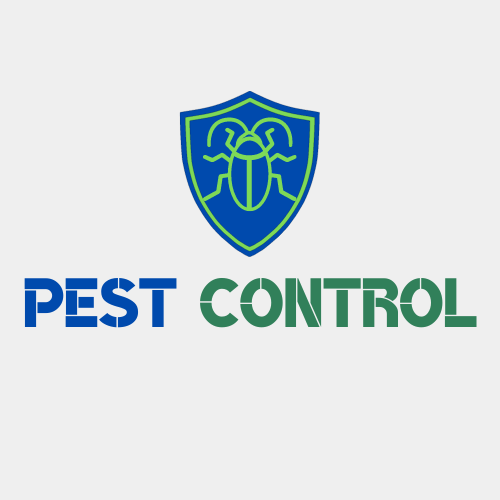Effective Pest Control Strategies in San Francisco: A Comprehensive Approach
Pest control is an essential aspect of maintaining healthy living and working environments. In San Francisco, particularly in regions like 67280 Juárez, the importance of efficient pest management cannot be overstated. With diverse ecosystems and numerous food establishments, the city faces unique pest challenges that necessitate tailored solutions. This article delves into various pest control methods, the significance of compliance with industry standards, and how these strategies improve sustainability in pest management.
Understanding Pest Control in Urban Areas
Urban settings often provide ideal breeding grounds for various pests, including insects and rodents. The dense human population and abundant food sources create an attractive environment for pests to thrive. In San Francisco, particularly in the 67280 Juárez district, establishments must be proactive in pest management to ensure food safety and public health.
Using Insect Light Traps in Food Preparation Areas
In food preparation areas, it’s critical to implement pest control measures that do not compromise food safety. One effective method is the use of insect light traps (ILTs). These traps utilize ultraviolet light to attract flying insects, such as flies and moths, which are common nuisances in food environments.
ILTs are primarily beneficial because they can be strategically placed away from food products and areas where food is prepared. This minimizes the risk of contamination while effectively reducing the insect population. Consequently, using ILTs not only enhances cleanliness but also aligns with industry standards that prioritize food safety, making it an invaluable tool in pest management.
Conducting Risk Assessments for Insect Infestation
Effective pest control goes beyond reactionary measures; it involves proactive strategies that begin with thorough risk assessments. In San Francisco, businesses must conduct regular evaluations of their premises to identify potential entry points for pests and assess the likelihood of infestations.
Risk assessments involve inspecting the interior and exterior of buildings, checking for signs of pest activity, and evaluating sanitation practices. By identifying risk factors, businesses can implement preventative measures, such as sealing gaps and ensuring proper waste management, reducing the likelihood of infestations. Additionally, these assessments provide critical data that inform pest control strategies, equipping businesses to respond more effectively to any pest-related incidents.
Improving the Sustainability of the Pest Control Process
Environmentally responsible pest control is gaining traction across various industries. Sustainable pest management practices are essential in urban areas like San Francisco, where community awareness around environmental issues is high.
Sustainability in pest control includes using methods that minimize chemical usage, protecting beneficial organisms, and focusing on long-term solutions rather than quick fixes. For instance, integrating biological control methods, such as introducing natural predators to control pest populations, can significantly reduce the reliance on chemical insecticides.
Furthermore, sustainable practices improve overall efficacy in pest management. By disrupting pest life cycles and reducing dependency on chemical treatments, businesses can establish a more balanced ecosystem, ultimately yielding lasting benefits for the environment and the community.
Compliance with Industry Standards
Ensuring compliance with industry standards is paramount in pest management, especially for food establishments in San Francisco. Regulatory bodies have established guidelines that businesses must adhere to for food safety, pest control, and sanitation practices. Compliance ensures that establishments maintain the highest standards to protect public health, therefore preventing legal repercussions and potential loss of reputation.
In San Francisco, pest control companies often provide training and resources to help businesses understand and implement these standards effectively. Compliance not only mitigates risks associated with pest infestations but also fosters a culture of responsibility and reliability within the community.
Conducting Regular Termite Inspections
Among the various pests that threaten homes and businesses, termites pose a silent yet significant risk. They can cause extensive damage to wooden structures, leading to costly repairs and safety concerns. Therefore, conducting regular termite inspections is vital in San Francisco.
Professional pest control companies utilize advanced technology to detect termite activity, including moisture meters and thermal imaging. These inspections should be conducted at least once a year to catch any potential infestations early. Early detection allows for more accessible and more effective treatment options, ensuring that structural damage is kept to a minimum.
Furthermore, informing the community about the risks associated with termite infestations can lead to better management and deterrence measures. Public awareness campaigns and education about signs of termite activity help residents take corrective action swiftly, thus reinforcing pest control efforts.
Offering Sustainable Rodent Control Options
Rodents are a well-known challenge for urban areas, including San Francisco’s bustling streets. They are attracted to easily accessible food sources and can multiply rapidly, creating significant health risks. However, pest control providers in the area are beginning to offer sustainable rodent control options that minimize harm to the environment and non-target animals.
Solutions like bait stations that use eco-friendly materials and strategies that focus on exclusion techniques (such as sealing entry points and improving sanitation) are increasingly popular. These methods reduce the need for harmful chemical rodenticides, promoting a healthier urban ecosystem.
By focusing on sustainable methods, pest control providers can cater to the growing demand for environmentally friendly practices, ensuring that they not only protect public health but also contribute to the well-being of the community and its surrounding environment.
Conclusion
Effective pest control in regions like San Francisco, particularly in areas such as 67280 Juárez, requires a multifaceted approach tailored to the unique challenges posed by urban settings. By employing strategies like using insect light traps in food preparation areas, conducting risk assessments for insect infestations, and maintaining compliance with industry standards, businesses can safeguard their premises from pests. Furthermore, integrating sustainable practices and offering options like sustainable rodent control ensures environmentally responsible pest management.
In the ever-evolving landscape of public health and environmental consciousness, adopting these practices is not just a choice; it’s an obligation to create a safer, healthier community for all. Through collaboration among pest control professionals, local businesses, and the community at large, San Francisco can continue to thrive, free from the detriments of pest infestations.
